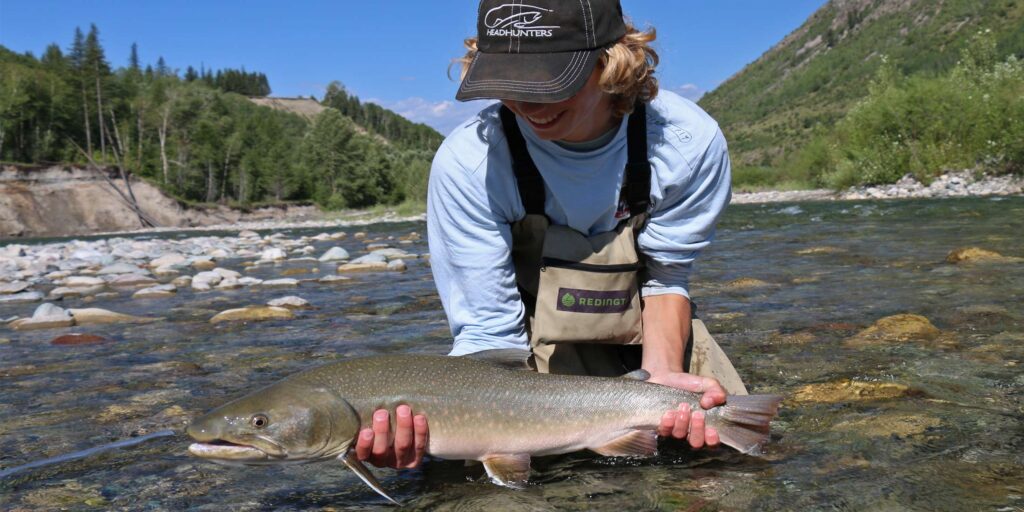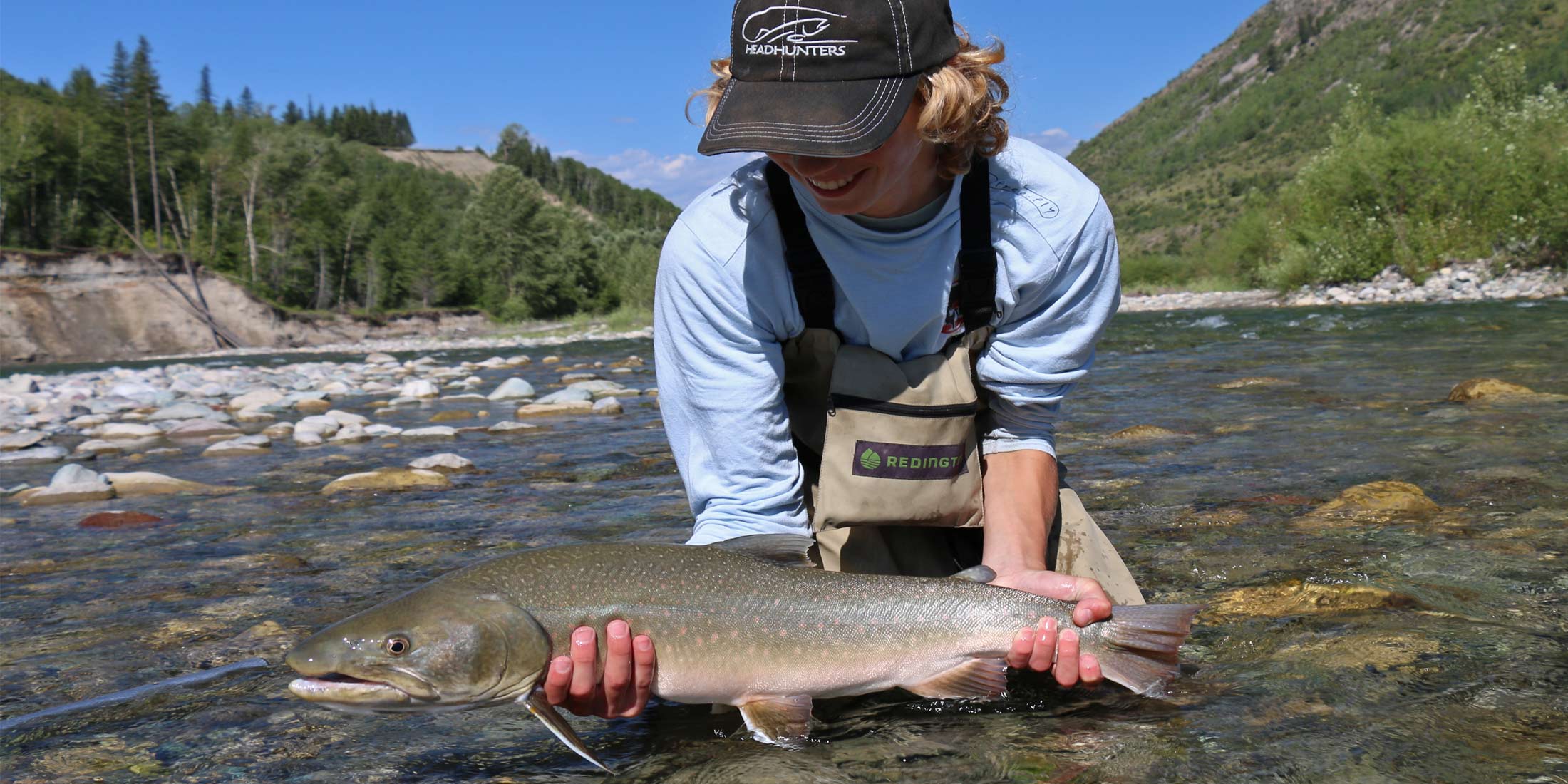
Fernie Fly Fishing: An Angler’s Guide to the Elk River and Beyond
Fernie, British Columbia, nestled in the heart of the Canadian Rockies, is a haven for outdoor enthusiasts. While renowned for its legendary ski slopes, Fernie also boasts world-class fly fishing opportunities, particularly on the Elk River and its tributaries. This article provides a comprehensive guide to Fernie fly fishing, covering everything from the best times to fish to the techniques and gear you’ll need to land the trout of your dreams.
The Allure of Fernie Fly Fishing
The Elk River, a designated Blue Ribbon trout stream, is the crown jewel of Fernie fly fishing. Its clear, cold waters teem with westslope cutthroat trout, known for their vibrant colors and aggressive takes. The river’s diverse structure, including riffles, runs, pools, and undercut banks, provides ideal habitat for these prized fish. Beyond the Elk, numerous smaller streams and lakes offer additional Fernie fly fishing experiences, catering to anglers of all skill levels.
Understanding the Elk River: A Prime Fly Fishing Destination
The Elk River is a freestone river, meaning its flow is primarily dependent on snowmelt and rainfall. This results in fluctuating water levels throughout the year. Understanding these fluctuations is crucial for successful Fernie fly fishing. Spring runoff, typically occurring from late May to early July, can make the river high and turbid, limiting fishing opportunities. However, as the water recedes and clears, usually by mid-July, the Elk River comes alive with trout.
Prime Seasons for Fernie Fly Fishing
The optimal time for Fernie fly fishing is generally from late July through October. During this period, water levels are stable, and the trout are actively feeding in preparation for winter. The Elk River experiences several significant insect hatches, providing anglers with excellent opportunities to match the hatch and entice trout with dry flies. September and October often offer the best dry fly fishing, with cooler temperatures and fewer crowds.
Essential Gear for Fernie Fly Fishing
To maximize your Fernie fly fishing experience, it’s essential to have the right gear. A 9-foot, 5- or 6-weight fly rod is a versatile choice for the Elk River. Pair it with a quality fly reel loaded with floating fly line and a tapered leader. Waders and wading boots are necessary for accessing the best fishing spots, and polarized sunglasses are crucial for spotting fish and reducing glare. A well-stocked fly box is also essential, containing a variety of dry flies, nymphs, and streamers.
Fly Selection: Matching the Hatch on the Elk River
Successful Fernie fly fishing often hinges on matching the hatch, which means selecting flies that imitate the insects the trout are currently feeding on. Some of the most important hatches on the Elk River include:
- Golden Stoneflies: These large, yellow stoneflies hatch in late July and August, providing excellent dry fly fishing opportunities.
- Green Drakes: These large mayflies hatch in August and September, attracting trout to the surface.
- Caddisflies: Caddisflies are present throughout the season, with various species hatching at different times.
- Midges: These tiny flies can be important during the cooler months.
In addition to matching the hatch, it’s also wise to carry attractor patterns, such as Royal Wulffs and Humpies, which can entice trout even when no specific hatch is occurring.
Fly Fishing Techniques for the Elk River
Several fly fishing techniques are effective on the Elk River. Dry fly fishing is a popular choice, particularly during hatches. Presenting your fly with a drag-free drift is crucial for fooling wary trout. Nymphing, using weighted nymphs fished beneath the surface, can be effective when trout are feeding subsurface. Streamer fishing, using larger, imitative flies, can be productive for targeting larger trout.
Ethical Angling and Conservation
As responsible anglers, it’s essential to practice ethical angling and conservation. The Elk River is a precious resource, and it’s our responsibility to protect it for future generations. Practice catch and release whenever possible, using barbless hooks to minimize harm to the fish. Avoid wading in sensitive spawning areas, and pack out all your trash. Support local conservation organizations that are working to protect the Elk River and its watershed.
Guided Fernie Fly Fishing Trips
For anglers who are new to the area or want to maximize their chances of success, hiring a local guide is an excellent option. Several reputable outfitters offer guided Fernie fly fishing trips on the Elk River and its tributaries. Guides can provide valuable insights into the best fishing spots, techniques, and fly patterns. They can also help you navigate the river safely and ethically.
Beyond the Elk River: Exploring Other Fernie Fly Fishing Opportunities
While the Elk River is the main attraction, Fernie fly fishing extends to other nearby waters. The Wigwam River, a tributary of the Elk, offers excellent dry fly fishing for westslope cutthroat trout. Several smaller streams, such as Morrissey Creek and Lizard Creek, also provide opportunities for anglers to explore. Additionally, several lakes in the area, such as Island Lake and Surveyors Lake, offer stillwater fishing for trout.
Regulations and Licensing
Before embarking on your Fernie fly fishing adventure, it’s essential to familiarize yourself with the local regulations and licensing requirements. A valid British Columbia fishing license is required for all anglers aged 16 and older. Specific regulations may apply to certain sections of the Elk River and its tributaries, so it’s important to check the current regulations before fishing. Regulations can be found on the BC Government website.
Planning Your Fernie Fly Fishing Trip
Planning is key to a successful Fernie fly fishing trip. Consider the time of year you plan to visit, and pack accordingly. Be prepared for changing weather conditions, as the weather in the Canadian Rockies can be unpredictable. Book accommodations and guided trips well in advance, especially during peak season. And most importantly, be sure to bring your sense of adventure and a passion for fly fishing!
Where to Stay and Eat in Fernie
Fernie offers a variety of accommodation options, ranging from hotels and motels to vacation rentals and campgrounds. Several restaurants in town cater to anglers, offering hearty meals and local craft beers. Be sure to check out local fly shops for gear, advice, and the latest fishing reports. [See also: Fernie Accommodation Guide] [See also: Best Restaurants in Fernie]
The Future of Fernie Fly Fishing
The future of Fernie fly fishing depends on our collective efforts to protect the Elk River and its watershed. Climate change, pollution, and habitat degradation pose significant threats to the river’s ecosystem. By practicing ethical angling, supporting conservation efforts, and advocating for responsible resource management, we can help ensure that future generations will have the opportunity to experience the magic of Fernie fly fishing.
In conclusion, Fernie fly fishing provides an unparalleled experience for anglers seeking pristine waters, stunning scenery, and abundant trout. With careful planning, the right gear, and a commitment to conservation, you can create memories that will last a lifetime. Whether you’re a seasoned angler or a beginner, Fernie offers something for everyone. So, pack your bags, grab your fly rod, and get ready to experience the thrill of Fernie fly fishing!

